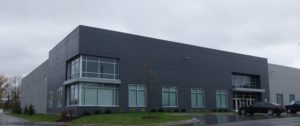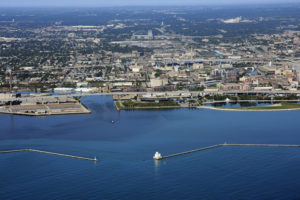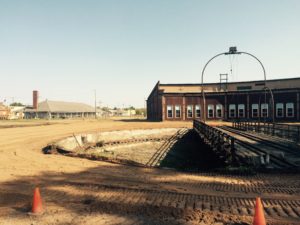
Contaminated soils from around the Roundhouse were excavated and hauled off site to the old Spooner Landfill. The Roundhouse area was then capped and seeded. This area will be used for a public space. Spooner will be renovating the Roundhouse as a public space.
The city of Spooner, located in northwestern Wisconsin, pop. 2,700, has a rich railroad heritage. The city’s origin and colorful history is rooted in the railroad expansion of the late 19th and early 20th centuries.
Spooner was an important railroad center of the Chicago and North Western Railway for many years. A historic railway roundhouse, a surviving turntable, and other aspects of the original rail yard still exist. The Spooner roundhouse is one of the few remaining structures of its kind.
Several local and state organizations have collaborated for years on efforts to clean up environmental contamination and preserve this unique and historic landmark property. The land is in the “Museum District” which also includes the Railroad Memories Museum and the Wisconsin Canoe Heritage Museum. The Roundhouse property includes one of the only working turntables in the state. The Wisconsin Great Northern Railroad operates active tracks on the site.
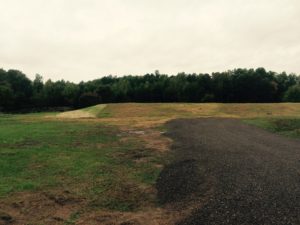
The regulatory issues involved in this project were handled through a collaboration of the Wisconsin DNR’s R&R and Waste and Materials Management programs. The excavated soils were placed at the old Spooner Landfill and used as part of a recapping project. The contaminated soils remaining at the site were capped and seeded.
Many years of railroad activities and subsequent manufacturing uses led to concerns about possible environmental contamination on the property. Section 128(a) funding from the EPA contributed to several successful Green Team project meetings with the Wisconsin DNR, the city of Spooner, and other stakeholders. Section 128(a) funds also supported the Wisconsin DNR’s efforts to counsel the city on managing environmental liability and other communications with the city. Spooner further received Phase I ESA contractor services through the Wisconsin DNR’s Wisconsin Assessments Money (WAM) program, funded by the EPA ARC Assessment grants, prior to its acquisition of the roundhouse property.
Contaminated soils from around the roundhouse were excavated and disposed of at the old city landfill, as part of a recapping project. The roundhouse property was then capped and seeded. The property will be open to the public, and the city of Spooner is also renovating the roundhouse as a public space.
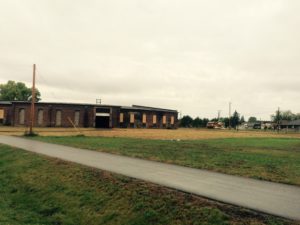
The Roundhouse property includes one of the only working turntables in the state.
The success of this northern Wisconsin cleanup site is highlighted in the recent year-end Report, a summary of the outcomes funded by a Section 128(a) grant from the US EPA made to the Wisconsin DNR’s Brownfields program. Previous 128(a) reports, including mid-year and year-end summaries going back to 2012, can be found on the DNR’s RR Program web page.




